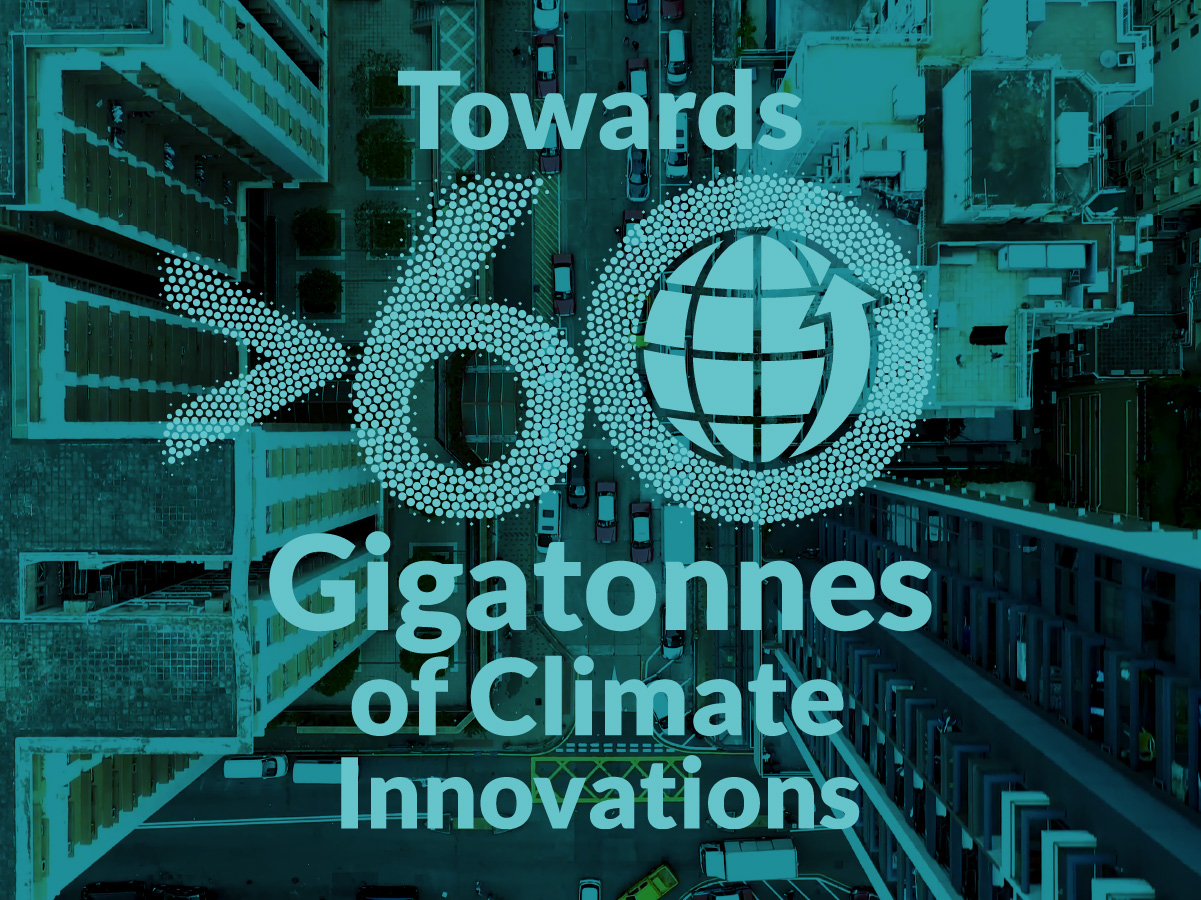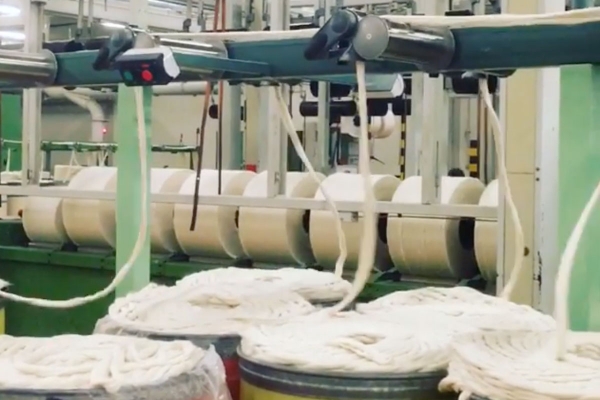Nominated innovations
1000 innovative clean energy solutions and > 150 framework enablers with the potential to deliver more than twelve gigatonnes of avoided emissions by 2030
These assessments are based on a basic avoided emission assessment. The overall concept of avoided emissions is that a solution (product or service) enables the same function to be performed with significantly less GHG emissions. The method of measuring avoided emissions, is to compare a baseline scenario without the enabling solution, with a scenario using the enabling solution; whereby the baseline represents the ‘business as usual’ (BAU) scenario.
These assessments are based on the framework document: The Avoided Emissions Framework (AEF) from September 2020

Electric powered taxi services
Ekorent provides a taxi hailing service based on electric vehicles and renewable energy, and is therefore environmentally friendly when the electricity comes from renewable energy sources. The service, called Nopia ride, is intended to be an easy to hail, affordable and 100 % emission-free way to get around. Nopia is now available in Nairobi, Kenya. Their mission is to reduce harmful air-pollution and offer affordable electric rides to everyone.
Finland
≈10

EkoRent
Electric powered taxi services
Ekorent provides a taxi hailing service based on electric vehicles and renewable energy, and is therefore environmentally friendly when the electricity comes from renewable energy sources. The service, called Nopia ride, is intended to be an easy to hail, affordable and 100 % emission-free way to get around. Nopia is now available in Nairobi, Kenya. Their mission is to reduce harmful air-pollution and offer affordable electric rides to everyone.
≈10Mt CO2e/year

Radiant cooling solution for the building sector
Most commercial buildings have a centralized Heating, Ventilation and Air Conditioning (HVAC) system to meet the indoor cooling demand. The cooling distribution in these systems is a significant contributor to energy consumption in commercial buildings and uses air as a heat transfer medium. Oorja Energy’s “Radiant Cooling Solution” increases efficiencies in cooling distribution. The solution operates on chilled water supply between 16–20°C as compared to conventional centralized HVAC systems that require chilled water supply at 7°C. This leads to significant savings in power as the conventional compressor has to work more to produce chilled water at this low temperature.
India
≈10

Oorja Energy Engineering Service Private Limited
Radiant cooling solution for the building sector
Most commercial buildings have a centralized Heating, Ventilation and Air Conditioning (HVAC) system to meet the indoor cooling demand. The cooling distribution in these systems is a significant contributor to energy consumption in commercial buildings and uses air as a heat transfer medium. Oorja Energy’s “Radiant Cooling Solution” increases efficiencies in cooling distribution. The solution operates on chilled water supply between 16–20°C as compared to conventional centralized HVAC systems that require chilled water supply at 7°C. This leads to significant savings in power as the conventional compressor has to work more to produce chilled water at this low temperature.
≈10Mt CO2e/year

Modular thermal energy storage units
ECO-TECH CERAM (ETC) is an innovative company specialized in thermal storage, energetic efficiency, and industrial wastes valuation recovery and advanced materials characterization. ETC has produced ceramic materials with great thermal properties. The materials have been used to develop a new heat recovery method–EcoStock. Eco-Stock is a turnkey eco-efficient thermal storage solution for high-temperature thermal applications.
France
≈10

Eco-Tech Ceram
Modular thermal energy storage units
ECO-TECH CERAM (ETC) is an innovative company specialized in thermal storage, energetic efficiency, and industrial wastes valuation recovery and advanced materials characterization. ETC has produced ceramic materials with great thermal properties. The materials have been used to develop a new heat recovery method–EcoStock. Eco-Stock is a turnkey eco-efficient thermal storage solution for high-temperature thermal applications.
≈10Mt CO2e/year

Redox flow battery for energy storage
Delectrik Systems has developed energy storage products based on vanadium redox flow battery technology. Unlike solid-state batteries, such as lead/lithium, a flow battery has a simple one-electron reaction in the aqueous phase, which gives it a very long cycle and shelf life with the potential to match the lifetime of renewables (25 years). The cost of the product is low enough that Delectrik claims it is competitive on upfront capex even at low manufacturing volumes compared to other solid-state batteries. The lifecycle cost could also be significantly lower than other competing technologies.
India
≈10

Delectrik Systems Private Limited
Redox flow battery for energy storage
Delectrik Systems has developed energy storage products based on vanadium redox flow battery technology. Unlike solid-state batteries, such as lead/lithium, a flow battery has a simple one-electron reaction in the aqueous phase, which gives it a very long cycle and shelf life with the potential to match the lifetime of renewables (25 years). The cost of the product is low enough that Delectrik claims it is competitive on upfront capex even at low manufacturing volumes compared to other solid-state batteries. The lifecycle cost could also be significantly lower than other competing technologies.
≈10Mt CO2e/year

Doubling biopower plant electrical efficiency
Today's established technology for bio power is the steam cycle, in which 30 percent of the energy input results in electricity, with the remainder being heat and energy losses. Bio power plants are therefore primarily heating plants and, secondly, producers of electricity. Phoenix Biopower's technology has developed a different thermodynamic process. The first step is that the fuel is gasified under high pressure together with steam. The gas formed then drives a gas turbine where steam is used to optimize combustion. With this technology, efficiency is doubled, and electricity can be produced with up to 60 percent of the energy input.
Sweden
≈10

Phoenix Biopower AB
Doubling biopower plant electrical efficiency
Today's established technology for bio power is the steam cycle, in which 30 percent of the energy input results in electricity, with the remainder being heat and energy losses. Bio power plants are therefore primarily heating plants and, secondly, producers of electricity. Phoenix Biopower's technology has developed a different thermodynamic process. The first step is that the fuel is gasified under high pressure together with steam. The gas formed then drives a gas turbine where steam is used to optimize combustion. With this technology, efficiency is doubled, and electricity can be produced with up to 60 percent of the energy input.
≈10Mt CO2e/year

Sustainable products from rise hull-based nano materials
Consulting and Energy develops and produces sustainable products based on nanomaterials obtained from the recovery of rice husk waste that would otherwise end up on landfills. The husk is initially used as fuel for energy production in a biomass plant that has an ash yield of 20%, which is the basis for several businesses lines that have been developed by the company: production of solar grade silicon, lithium battery material, aerogels for water irrigation, an enzymatic catalyst and structural insulated panel with an insulation sheet of aggregated rice husk.
Chile
≈10

Consulting and Energy
Sustainable products from rise hull-based nano materials
Consulting and Energy develops and produces sustainable products based on nanomaterials obtained from the recovery of rice husk waste that would otherwise end up on landfills. The husk is initially used as fuel for energy production in a biomass plant that has an ash yield of 20%, which is the basis for several businesses lines that have been developed by the company: production of solar grade silicon, lithium battery material, aerogels for water irrigation, an enzymatic catalyst and structural insulated panel with an insulation sheet of aggregated rice husk.
≈10Mt CO2e/year

Early wildfire detection system
ACOT systems is an early bushfire detection system that uses optical and thermal sensors with automated movement that increases surveillance frequency. Each image is analysed with artificial intelligence algorithms to detect signs of fire. Upon finding one, an alert is initiated, indicating the most likely geolocation of the fire to the authorities responsible for controlling and extinguishing it. Detecting wildfires can protect infrastructure or sensitive environments from uncontrolled bushfire outbreaks.
Chile
≈10

ACOT Systems
Early wildfire detection system
ACOT systems is an early bushfire detection system that uses optical and thermal sensors with automated movement that increases surveillance frequency. Each image is analysed with artificial intelligence algorithms to detect signs of fire. Upon finding one, an alert is initiated, indicating the most likely geolocation of the fire to the authorities responsible for controlling and extinguishing it. Detecting wildfires can protect infrastructure or sensitive environments from uncontrolled bushfire outbreaks.
≈10Mt CO2e/year

Batteries for EV range extension and grid services
EP Tender is a company providing services relevant in the area of electrical mobility. The company is focused on mechanical design and tuning, electrical system development and integration, design and coding of the control algorithms, modeling and managing the rental platform and network, and equipping their clients' cars with the additional charging interface. The interface takes the form of a tow-behind attachment to provide additional storage for electric transport solutions. The business model uses a customer driven tender system to charge and exchange batteries.
France
≈10

EP Tender
Batteries for EV range extension and grid services
EP Tender is a company providing services relevant in the area of electrical mobility. The company is focused on mechanical design and tuning, electrical system development and integration, design and coding of the control algorithms, modeling and managing the rental platform and network, and equipping their clients' cars with the additional charging interface. The interface takes the form of a tow-behind attachment to provide additional storage for electric transport solutions. The business model uses a customer driven tender system to charge and exchange batteries.
≈10Mt CO2e/year

Online B2B marketplace for fresh produce
Moving food from the farm to the family dinner table can take months of passing through intermediaries before arriving at the supermarket. Chemical are therefore used to ensure longevity, resulting in old food that is perhaps months old, chemically laden, and with reduced nutritional value. Fresh.Land digitizes the food supply chain, allowing farmers to sell directly to retailers using a platform that provides logistics, payment, legal and knowledge support integrated into one solution. Food is purchased and consumed within days instead of months, protecting food integrity and minimizing waste.
Denmark
≈10

Fresh.Land
Online B2B marketplace for fresh produce
Moving food from the farm to the family dinner table can take months of passing through intermediaries before arriving at the supermarket. Chemical are therefore used to ensure longevity, resulting in old food that is perhaps months old, chemically laden, and with reduced nutritional value. Fresh.Land digitizes the food supply chain, allowing farmers to sell directly to retailers using a platform that provides logistics, payment, legal and knowledge support integrated into one solution. Food is purchased and consumed within days instead of months, protecting food integrity and minimizing waste.
≈10Mt CO2e/year

Recycling textile waste into new fibers
As much as 73 % of clothing is landfilled or burnt. Infinited Fiber Company has a goal to revolutionize the fashion world by changing the waste in clothing manufacturing. The company has developed a process technology that can turn textile and paper waste into new fibers for the textile industry. They claim this can be done infinitely without decreasing the quality of the fiber. The technology rids the value chain of carbon disulfide – the most challenging, hazardous, and biologically harmful chemical in the fashion industry. Furthermore, the innovation is also flexible and can be integrated into existing pulp, dissolving pulp and viscose fiber plants.
Finland
≈10

Infinited Fiber Company
Recycling textile waste into new fibers
As much as 73 % of clothing is landfilled or burnt. Infinited Fiber Company has a goal to revolutionize the fashion world by changing the waste in clothing manufacturing. The company has developed a process technology that can turn textile and paper waste into new fibers for the textile industry. They claim this can be done infinitely without decreasing the quality of the fiber. The technology rids the value chain of carbon disulfide – the most challenging, hazardous, and biologically harmful chemical in the fashion industry. Furthermore, the innovation is also flexible and can be integrated into existing pulp, dissolving pulp and viscose fiber plants.
≈10Mt CO2e/year